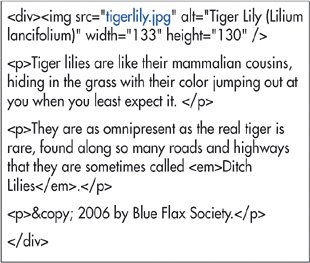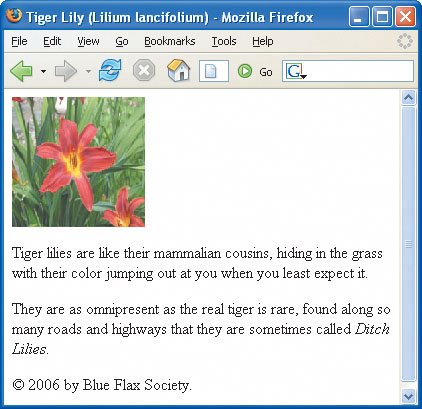Links, Images, and Other Non-Text Content
| Of course, what makes the Web so vibrant are the links from one page to another, the images, Flash animations, QuickTime movies, MP3 songs, and more. Instead of actually enclosing the external files in the (X)HTML file, these files are saved independently and are simply referenced from within the page. Since the reference is nothing more than text, the (X)HTML file remains universally accessible. Figure 1.12. In this (X)HTML document, there is a reference to a file called tigerlily.jpg, which the browser will access, open, and load when it loads the rest of the page. Most browsers can handle links and images without much trouble. They can't necessarily handle every other kind of file, however. If you reference a file that your visitor's browser doesn't understand, the browser will usually try to find a plugin or helper applicationsome appropriate program on the visitor's computerthat is capable of opening that kind of file. You can also give browsers extra information about how to download plugins for viewing particular files if the visitor doesn't already have one on their computer. We'll cover images in Chapter 5, Images, and go over plugins and helper applications in Chapter 18, Video, Audio, and other Multimedia. Figure 1.13. Images, and other non-text content, are referenced from a Web page and the browser displays them together with the text. |
EAN: 2147483647
Pages: 340

